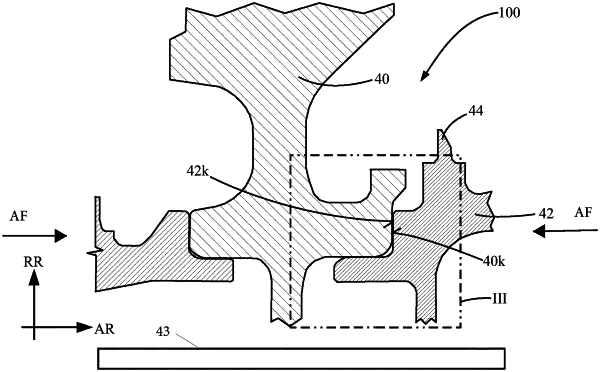| CPC F01D 5/066 (2013.01) [F05D 2230/64 (2013.01); F05D 2260/30 (2013.01)] | 11 Claims |

|
1. A rotor assembly clamped together by an axial clamping force provided by a tie-rod, the rotor assembly being for a gas turbine, the rotor assembly comprising:
a group of rotor segments arranged in succession in an axial direction, the group comprising a first forward rotor segment, a second forward rotor segment, and a rear rotor segment, and the group being clamped together by the axial clamping force; and
the first forward rotor segment disposed forwardly in the axial direction having a first contact surface and the rear rotor segment disposed rearwardly in the axial direction having a second contact surface,
wherein the first contact surface and the second contact surface are at least partially in contact with each other,
wherein the first contact surface and the second contact surface are substantially annular in shape and extend in a radial direction and in a circumferential direction,
wherein the first contact surface or the second contact surface extend at least partially obliquely relative to the radial direction,
wherein an angle is formed between the first contact surface and the second contact surface when viewed in a sectional plane defined by the axial direction and the radial direction, and
wherein the first forward rotor segment and the rear rotor segment are clamped together via a single contact surface pair formed by the first annular contact surface and the second annular contact surface.
|